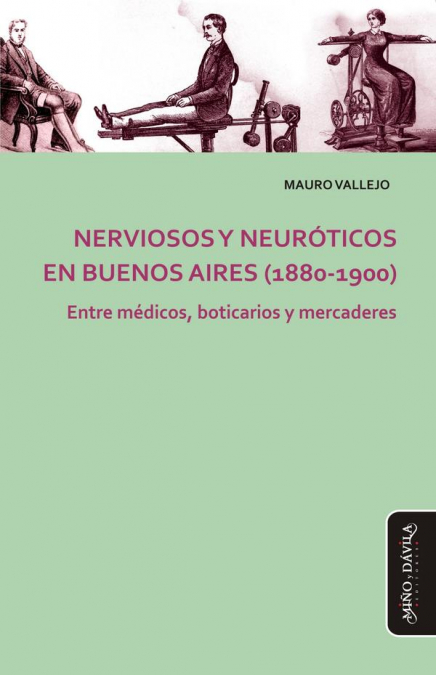
Mauro Vallejo
En 1892 una de las primeras médicas argentinas escribió que una mujer porteña no podía ser chic sin ser al mismo tiempo “exquisitamente nerviosa”. Este volumen reconstruye la historia de esa alquimia enfermiza, merced a la cual la moda, la expansión del consumo y la metamorfosis de la vida urbana atizaron la irrupción de una nueva experiencia llamada neurosis.Durante las últimas dos décadas del siglo XIX, Buenos Aires se transformó en el hábitat hospitalario de unos sujetos que no parecían hechos para el manicomio, pero que vivían atormentados por el insomnio, el desasosiego o los dolores gástricos. La medicina teórica, que a duras penas había aprendido a reconocer delirios o impulsos ciegos, se mostró desconcertada ante la profusión de esos neuróticos, que no eran peligrosos y tenían hábitos de buenos cosmopolitas. En base al estudio de fuentes variadas (avisos publicitarios, tesis médicas, folletos olvidables y novelas casi canónicas) este libro reconstruye las superficies o tramas culturales en que esa novedad fue modulada. Un imaginativo mercado de remedios, los institutos médicos privados (de gimnasia mecánica, hipnosis o electroterapia) y unas desabridas salas hospitalarias conformaron el trípode parcial en que esa experiencia pudo alojarse y expandirse en la Capital por esos años.Con una mirada que imbrica la historia de las ideas y la historia cultural, 'Nerviosos y neuróticos en Buenos Aires' despliega con erudición una conjetura: mucho antes de la llegada de las psicoterapias y los freudismos, y a expensas de una medicina nerviosa que, de la mano de José María Ramos Mejía, se resistía a sancionar la legitimidad de las neurosis, el mercado de consumo devino el artefacto plebeyo más propicio para hacer lugar o acompañar esa experiencia patológica y esa sensibilidad. 10